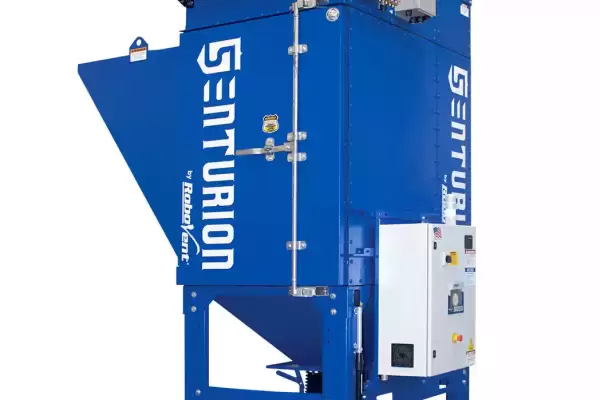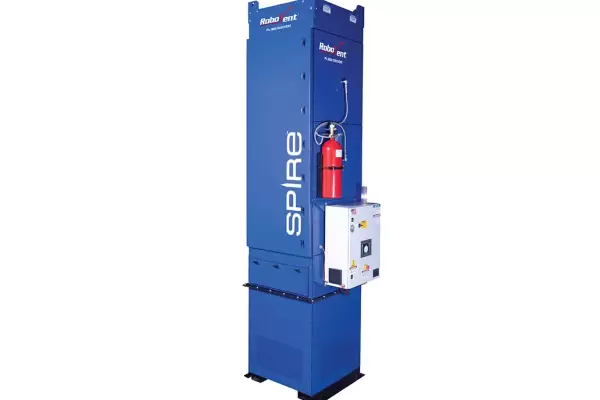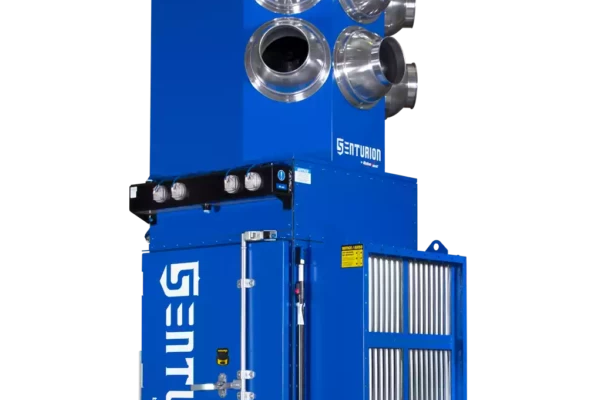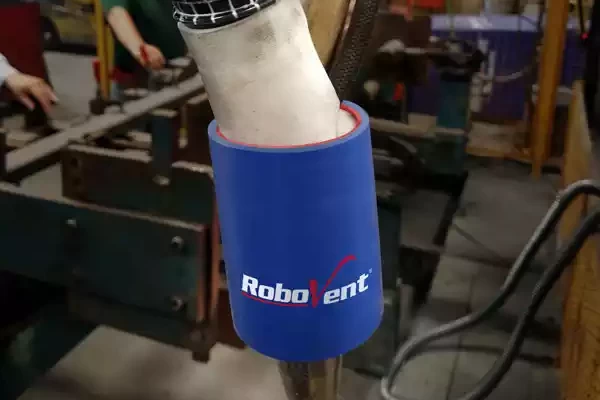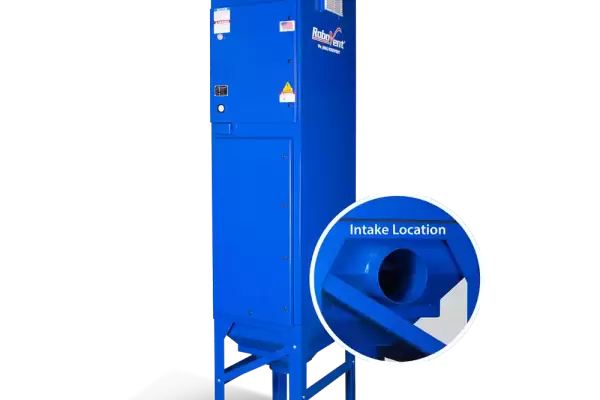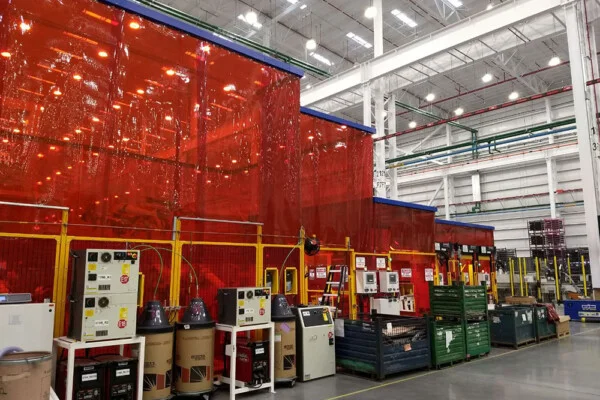Weld Fume Extraction Solutions by Welding Type
Welding applications can be categorized in two ways:
- Manual welding vs. robotic welding
- Welding technology
Manual Welding vs. Robotic Welding
Manual welding and robotic welding create different kinds of challenges.
- Manual welders are directly exposed to welding emissions; the solution must be designed to pull weld fumes away from the welder’s breathing zone and prevent further propagation through the facility.
- Robotic welding can often be contained to keep fumes away from humans, but the volume of weld fumes produced by a robotic welder can create challenges for weld fume control.
Learn more about weld fume collection for manual vs. robotic welding.
WELDING TECHNOLOGIES
There are many different types of welding, most of which can be performed either manually or robotically. The risks of breathing weld fume emissions depend largely on the type of welding, the specific materials used, and the volume of welding. The most common types of welding include:
- Arc Welding (MIG, TIG, Stick and Flux-Cored): These types of welding use a consumable weld wire or welding rod. Most of the weld fumes comes from the welding consumable. That means that these types of welding create significant volumes of toxic fumes and dust.
- Resistance Welding: Resistance welding does not use a weld wire or rod. Instead, an electrical current is used to join two pieces of metal. However, this does not mean that resistance welding does not produce dangerous weld fumes. Welding galvanized metals, in particular, has significant health risks.
- Laser Welding: Laser welding is similar to resistance welding in that there is no welding rod or wire involved. A laser is used to melt the edges of the metal pieces to be joined. Even without the welding consumable, this high-speed process can produce significant dust and fumes, especially if base materials are coated or galvanized.
Learn more about weld fume collection for different types of welding.
OPTIONS FOR WELD FUME COLLECTION
How do you manage welding fumes? Both manual welding and robotic welding require some form of weld fume extraction. Source capture is preferred where possible to reduce human exposure to weld fumes and prevent dangerous emissions from propagating through the facility.
- Robotic welding cells can often be contained under a hood such as the Streamline Hood. Individual cells can be ducted to a small dust collector like RoboVent Spire. RoboVent Senturion can provide weld fume extraction for a whole facility with multiple welding cells. Where source capture is not possible or practical, an ambient fume capture solution may be designed.
- Manual welding always requires a source capture solution. Common source capture options for manual welding include backdraft tables like RoboVent Crossflow, fume arms and fume guns. Fume guns are paired with a hi-vac weld fume extractor such as ProCube II or Fume Eliminator.
Read more:
DANGERS OF WELD FUMES
Are welding fumes toxic? The answer is yes! Welding fumes contain fumed metals and metal oxides, as well as other hazardous substances.
Breathing in welding emissions can cause serious health problems, including lung cancer or other damage to the lungs, manganism, metal fume fever, kidney damage, and other forms of cancer. Read more about weld fume dangers.
WELD FUME COMPOSITION
Weld fume composition depends on the type of welding and materials used (including both welding consumables and base metals). Hazardous materials commonly found in weld fume may include:
- Manganese
- Hexavalent Chromium
- Aluminum, iron and zinc oxides
- Silicates
Weld fumes from mild steel may also include trace amounts of additive metals such as nickel, beryllium, molybdenum, vanadium, cobalt and copper. Paints and coatings commonly contain additional toxic materials such as cadmium, lead oxide and chromates. Metalworking fluids and solvents may create volatile organic compounds (VOCs), which are dangerous to inhale.
HEALTH RISKS OF WELD FUMES
Welding creates very small particles that can be inhaled deeply into the lungs. Short-term exposure is associated with irritation of the eyes, nose and throat. Acute exposure may result in “metal fume fever,” a flu-like illness. Long-term exposure to weld fumes is associated with a number of diseases. Weld fume is carcinogenic and has been linked to cancers of the lung, larynx and urinary tract. Other illnesses caused by weld fume exposure may include:
- Lung damage
- Manganism (a neurological disease resembling Parkinson’s Disease)
- Stomach ulcers
- Kidney damage
- Nervous system damage
WELD FUME REGULATIONS
In the United States, weld fume emissions are regulated by the Occupational Safety and Health Administration (OSHA). Most other countries have their own regulatory bodies which create legal standards for weld fume exposure, such as the Canadian Centre for Occupational Health and Safety (CCOHS). These bodies set exposure limits for weld fumes that must be followed by law.
The OSHA Permissible Exposure Limit (PEL) for total weld fume concentration is 5 mg/m3 when welding mild steel, iron or aluminum. However, OSHA also sets PELs for specific elements and compounds found in weld fume, which are often much lower. For example, OSHA has specific PELs for hexavalent chromium, lead and lead oxides, manganese, beryllium, and other substances commonly found in weld fumes.
In addition to legal regulations, employers should also be aware of industry standards set by organizations such as the National Institute of Occupational Safety and Health (NIOSH) and ACGIH, an industry group that develops best practices based on scientific evidence. These standards are often lower than the OSHA PEL. While the standards do not have the force of law, employers may wish to aim for the lower exposure limits to ensure that they are protecting their employees and prepared for future changes in regulation.
Read more:
TALK TO THE WELD FUME COLLECTION EXPERTS
At RoboVent, we got our start in weld fume extraction all the way back in 1989. Since then, we’ve branched out to all kinds of dust, fume and mist collection, but weld fume control is still at the heart of what we do. We can help you:
- Evaluate your air quality and exposure risks
- Design and engineer a weld fume extraction solution tailored to your fumes, your facility and your indoor air quality goals
- Ensure compliance with weld fume regulations and reduce employee exposure to hazardous welding emissions
RECOMMENDED SOLUTIONS
OTHER SOLUTIONS
TOTAL FILTRATION PARTNER
RoboVent is your full turnkey resource for clean air in industrial environments. From facility testing and engineering, to installing equipment, providing replacement filters and preventive maintenance, RoboVent is ready to manage the whole process.
CONTACT US
Contact one of our industrial dust experts to gain the advantage against dust-generating processes and applications.


